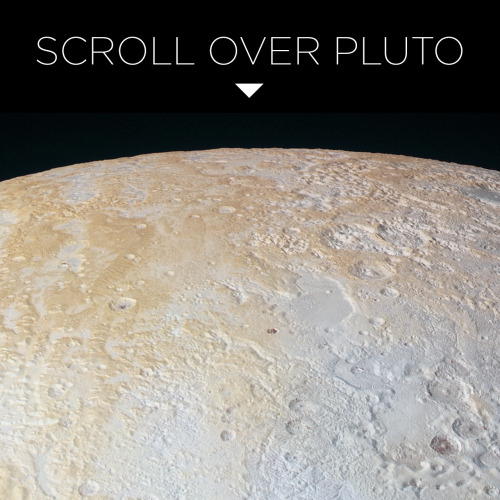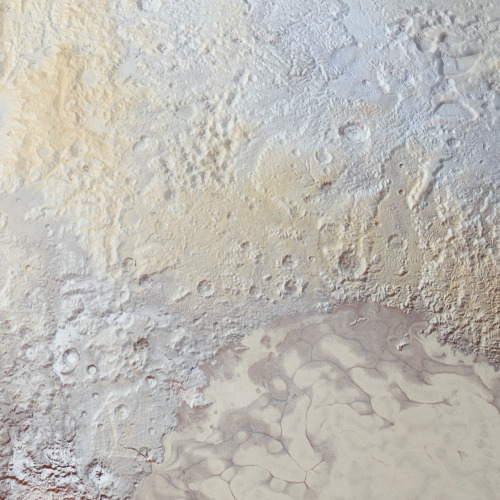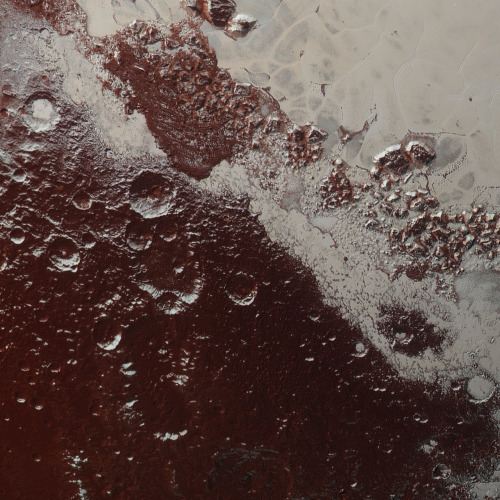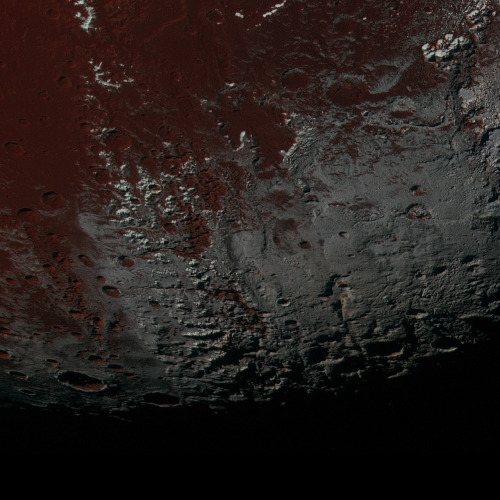It’s A Long Ways Down. This Is A View From The Vantage Point Of Astronaut Shane Kimbrough During His
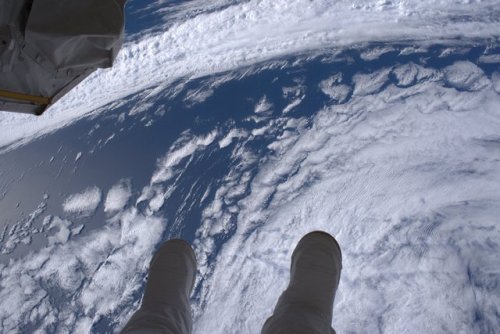
It’s a long ways down. This is a view from the vantage point of astronaut Shane Kimbrough during his spacewalk last Friday outside the International Space Station. Shane posted this photo and wrote, “ View of our spectacular planet (and my boots) during the #spacewalk yesterday with @Thom_astro.” During the spacewalk with Kimbrough and Thomas Pesquet of ESA, which lasted just over six-and-a-half hours, the two astronauts successfully disconnected cables and electrical connections to prepare for its robotic move Sunday, March 26.
Two astronauts will venture outside the space station again this Thursday, March 30 for the second of three spacewalks. Kimbrough and Flight Engineer Peggy Whitson will begin spacewalk preparation live on NASA Television starting at 6:30 a.m. EST, with activities beginning around 8 a.m. Watch live online here.
Make sure to follow us on Tumblr for your regular dose of space: http://nasa.tumblr.com
More Posts from Fillthevoid-with-space and Others

No matter where you hang your stockings, I wish you a very Merry Christmas!


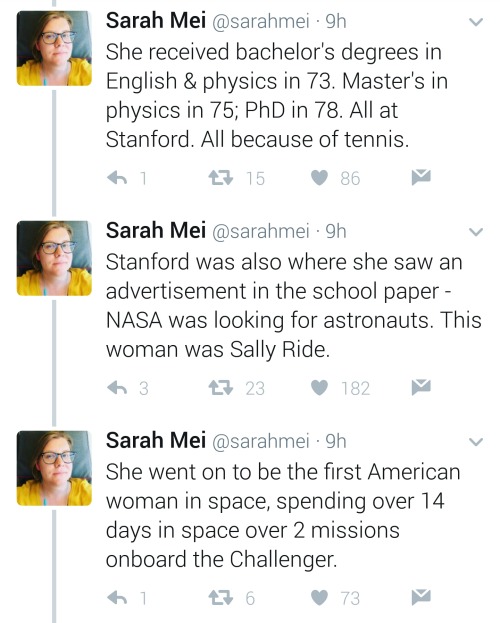

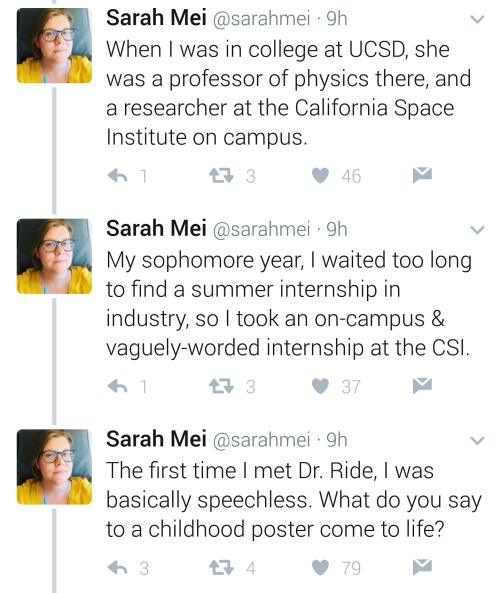
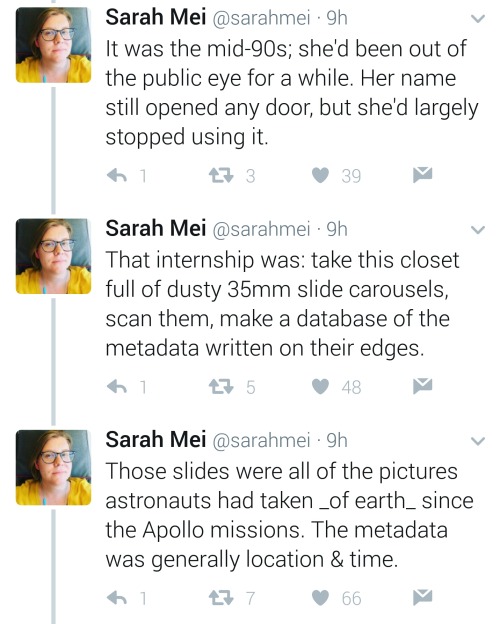
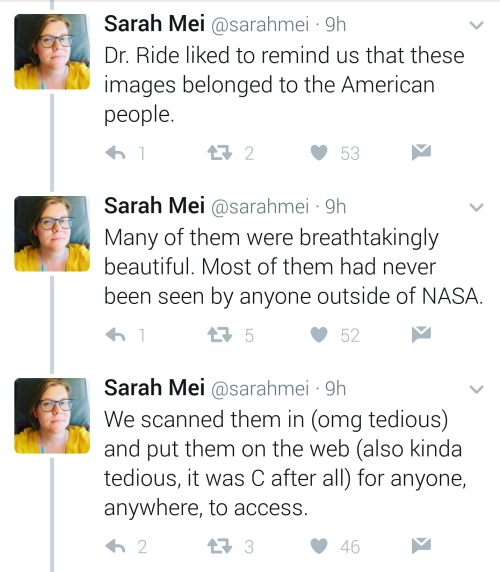
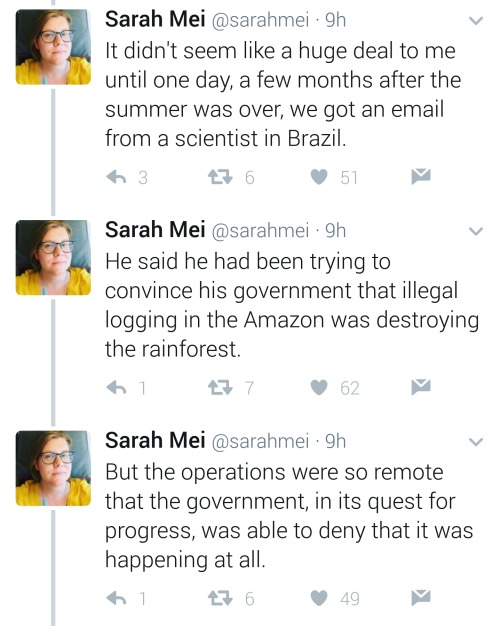
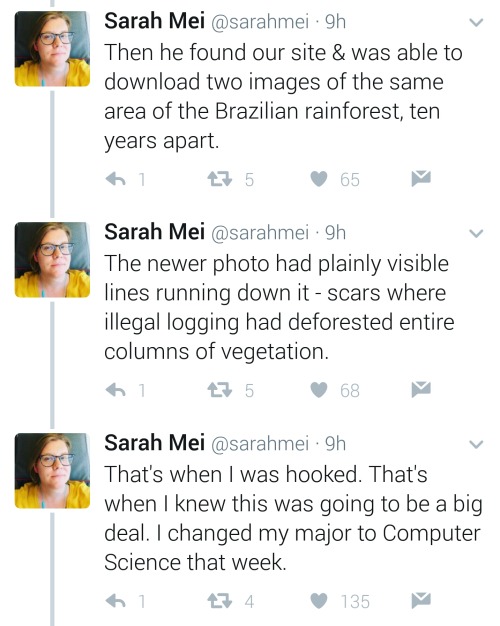
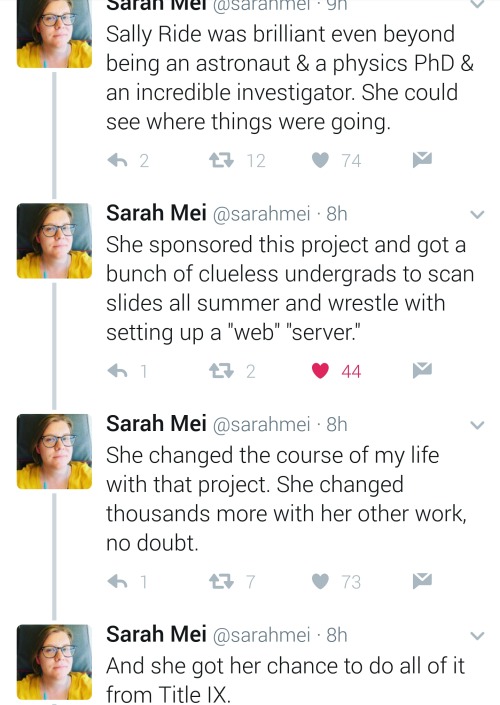
Equal opportunity benefits can be far-reaching
https://twitter.com/sarahmei/status/818682610712866817

One-year countdown to solar eclipse, August 21, 2017: path of totality overlaid on U.S. population density and interstate map.
In Conversation with the Sun: Parker Solar Probe Communications
Our Sun powers life on Earth. It defines our days, nourishes our crops and even fuels our electrical grids. In our pursuit of knowledge about the universe, we’ve learned so much about the Sun, but in many ways we’re still in conversation with it, curious about its mysteries.

Parker Solar Probe will advance this conversation, flying through the Sun’s atmosphere as close as 3.8 million miles from our star’s surface, more than seven times closer to it than any previous spacecraft. If space were a football field, with Earth at one end and the Sun at the other, Parker would be at the four-yard line, just steps away from the Sun! This journey will revolutionize our understanding of the Sun, its surface and solar winds.

Supporting Parker on its journey to the Sun are our communications networks. Three networks, the Near Earth Network, the Space Network and the Deep Space Network, provide our spacecraft with their communications, delivering their data to mission operations centers. Their services ensure that missions like Parker have communications support from launch through the mission.

For Parker’s launch on Aug. 12, the Delta IV Heavy rocket that sent Parker skyward relied on the Space Network. A team at Goddard Space Flight Center’s Networks Integration Center monitored the launch, ensuring that we maintained tracking and communications data between the rocket and the ground. This data is vital, allowing engineers to make certain that Parker stays on the right path towards its orbit around the Sun.

The Space Network’s constellation of Tracking and Data Relay Satellites (TDRS) enabled constant communications coverage for the rocket as Parker made its way out of Earth’s atmosphere. These satellites fly in geosynchronous orbit, circling Earth in step with its rotation, relaying data from spacecraft at lower altitudes to the ground. The network’s three collections of TDRS over the Atlantic, Pacific and Indian oceans provide enough coverage for continuous communications for satellites in low-Earth orbit.

The Near Earth Network’s Launch Communications Segment tracked early stages of Parker’s launch, testing our brand new ground stations’ ability to provide crucial information about the rocket’s initial velocity (speed) and trajectory (path). When fully operational, it will support launches from the Kennedy spaceport, including upcoming Orion missions. The Launch Communications Segment’s three ground stations are located at Kennedy Space Center; Ponce De Leon, Florida; and Bermuda.

When Parker separated from the Delta IV Heavy, the Deep Space Network took over. Antennas up to 230 feet in diameter at ground stations in California, Australia and Spain are supporting Parker for its 24 orbits around the Sun and the seven Venus flybys that gradually shrink its orbit, bringing it closer and closer to the Sun. The Deep Space Network is delivering data to mission operations centers and will continue to do so as long as Parker is operational.
Near the Sun, radio interference and the heat load on the spacecraft’s antenna makes communicating with Parker a challenge that we must plan for. Parker has three distinct communications phases, each corresponding to a different part of its orbit.
When Parker comes closest to the Sun, the spacecraft will emit a beacon tone that tells engineers on the ground about its health and status, but there will be very little opportunity to command the spacecraft and downlink data. High data rate transmission will only occur during a portion of Parker’s orbit, far from the Sun. The rest of the time, Parker will be in cruise mode, taking measurements and being commanded through a low data rate connection with Earth.

Communications infrastructure is vital to any mission. As Parker journeys ever closer to the center of our solar system, each byte of downlinked data will provide new insight into our Sun. It’s a mission that continues a conversation between us and our star that has lasted many millions of years and will continue for many millions more.
For more information about NASA’s mission to touch the Sun: https://www.nasa.gov/content/goddard/parker-solar-probe
For more information about our satellite communications check out: http://nasa.gov/SCaN
Make sure to follow us on Tumblr for your regular dose of space: http://nasa.tumblr.com.
This has been going on since 1995! There are so many pictures! I gotta check these out but it will take hours. Maybe treat myself to like ten a day? It’s a better way to wake up than checking Facebook right now, I like this plan.

Scientists Discover The Oldest, Largest Body Of Water In Existence–In Space
Scientists have found the biggest and oldest reservoir of water ever–so large and so old, it’s almost impossible to describe.
The water is out in space, a place we used to think of as desolate and desert dry, but it’s turning out to be pretty lush.
Researchers found a lake of water so large that it could provide each person on Earth an entire planet’s worth of water–20,000 times over. Yes, so much water out there in space that it could supply each one of us all the water on Earth–Niagara Falls, the Pacific Ocean, the polar ice caps, the puddle in the bottom of the canoe you forgot to flip over–20,000 times over.
The water is in a cloud around a huge black hole that is in the process of sucking in matter and spraying out energy (such an active black hole is called a quasar), and the waves of energy the black hole releases make water by literally knocking hydrogen and oxygen atoms together.
The official NASA news release describes the amount of water as “140 trillion times all the water in the world’s oceans,“ which isn’t particularly helpful, except if you think about it like this.
That one cloud of newly discovered space water vapor could supply 140 trillion planets that are just as wet as Earth is.
Mind you, our own galaxy, the Milky Way, has about 400 billion stars, so if every one of those stars has 10 planets, each as wet as Earth, that’s only 4 trillion planets worth of water.
The new cloud of water is enough to supply 28 galaxies with water.
Truly, that is one swampy patch of intergalactic space.
Equally stunning is the age of the water factory. The two teams of astrophysicists that found the quasar were looking out in space a distance of 12 billion light years. That means they were also looking back in time 12 billion years, to when the universe itself was just 1.6 billion years old. They were watching water being formed at the very start of the known universe, which is to say, water was one of the first substances formed, created in galactic volumes from the earliest time. Given water’s creative power to shape geology, climate and biology, that’s dramatic.
“It’s another demonstration that water is pervasive throughout the universe, even at the very earliest times,” says Matt Bradford, an astrophysicist at NASA’s Jet Propulsion Laboratory and leader of one of the teams that made the discovery. (The journal article reporting the discovery is titled, without drama, “The Water Vapor Spectrum of APM 08279+5255: X-Ray Heating and Infrared Pumping over Hundreds of Parsecs.”)
It is not as if you’d have to wear foul-weather gear if you could visit this place in space, however. The distances are as mind-bogglingly large as the amount of water being created, so the water vapor is the finest mist–300 trillion times less dense than the air in a typical room.
And it’s not as if this intergalactic water can be of any use to us here on Earth, of course, at least not in the immediate sense. Indeed, the discovery comes as a devastating drought across eastern Africa is endangering the lives of 10 million people in Somalia, Kenya, and Ethiopia. NASA’s water discovery should be a reminder that if we have the sophistication to discover galaxies full of water 12 billion light years away, we should be able to save people just an ocean away from drought-induced starvation.
The NASA announcement is also a reminder how quickly our understanding of the universe is evolving and how much capacity for surprise nature still has for us. There’s water on Mars, there’s water jetting hundreds of miles into space from Enceladus, one of Saturn’s moons, there are icebergs of water hidden in the polar craters of our own Moon. And now it turns out that a single quasar has the ability to manufacture galaxies full of water.
But it was only 40 years ago, in 1969, that scientists first confirmed that water existed anywhere besides Earth.
Solar System: Things to Know This Week
Like sailors of old, the Cassini mission team fondly thinks of the spacecraft as “she." On April 22, she begins her Grand Finale, a spectacular end game—22 daring dives between the planet’s atmosphere and innermost rings. Here are 10 things to know about her Grand Finale.

1. She’s Broadcasting Live This Week
On Tuesday, April 4 at 3 p.m. EDT (noon PDT), At Jet Propulsion Laboratory, the Cassini team host a news briefing to discuss the mission’s Grand Finale.
Tune in Tuesday: youtube.com/nasajpl/live

2. She’s Powered in Part By … Titan
Cassini left Earth with less than 1/30th of the propellant needed to power all her adventures at Saturn. The navigation team used the gravity of Saturn’s giant moon Titan to change course and extend the spacecraft’s exploration of Saturn. Titan also provides the gravity assist to push Cassini into its final orbits.
More on Cassini’s navigation: saturn.jpl.nasa.gov/mission/spacecraft/navigation/

3. She’s a Robot
Cassini is an orbiter that was named for 18th century astronomer Giovanni Domenico Cassini. She was designed to be captured by Saturn’s gravity and then explore it in detail with a suite of 12 powerful science instruments.
More on the Spacecraft: saturn.jpl.nasa.gov/mission/spacecraft/cassini-orbiter/

4. She Brought a Friend to Saturn
Cassini carried the European Space Agency’s Huygens Probe, which in 2005 descended through Titan’s thick, perpetual clouds and made the most distant landing to date in our solar system.
More on Huygens: saturn.jpl.nasa.gov/mission/spacecraft/huygens-probe/

5. She’s a Great Photographer
Your mobile phone likely captures dozens of megapixels in images. Cassini, using 1990s technology closer to one megapixel cameras, has returned some of the most stunning images in the history of solar system exploration.
Cassini Hall of Fame Images: go.nasa.gov/2oec6H2 More on Cassini’s Cameras: saturn.jpl.nasa.gov/imaging-science-subsystem/

6. She’s an Inspiration
Those great images have inspired artist’s and amateur image processors to create truly fantastic imagery inspired by the beauty of Saturn. Feeling inspired? There’s still time to share your Cassini-inspired art with us.
Cassini Inspires Campaign: saturn.jpl.nasa.gov/mission/cassiniinspires/

7. She’s Got a Long History
Two decades is a long time to live in the harsh environment of outer space (respect to the fast-approaching 40-year-old twin Voyager spacecraft). Launched in 1997, Cassini logged a lot of milestones over the years.
Explore the Cassini Timeline: saturn.jpl.nasa.gov/the-journey/timeline/

8. She Keeps a Diary
And, you can read it. Week after week going back to 1997, Cassini’s adventures, discoveries and status have been chronicled in the mission’s weekly significant events report.
Read It: https://saturn.jpl.nasa.gov/news/?topic=121

9. She’s Got a Fancy New App
Cassini was the prototype for NASA’s Eyes on the Solar System 3-D visualization software, so it’s fitting the latest Cassini module in the free, downloadable software is the most detailed, elaborate visualization of any mission to date.
Fly the Mission - Start to Finish: http://eyes.nasa.gov/cassini

10. She’s Going Out in a Blaze of Glory
In addition to all the new information from 22 orbits in unexplored space, Cassini’s engineers reprogrammed the spacecraft to send back details about Saturn’s atmosphere to the very last second before the giant planet swallows her up on Sept. 15, 2017.
More on the Grand Finale: saturn.jpl.nasa.gov/grandfinale
Discover more lists of 10 things to know about our solar system HERE.
Make sure to follow us on Tumblr for your regular dose of space: http://nasa.tumblr.com

UGC 12591: The Fastest Rotating Galaxy Known : Why does this galaxy spin so fast? To start, even identifying which type of galaxy UGC 12591 is difficult – it has dark dust lanes like a spiral galaxy but a large diffuse bulge of stars like a lenticular. Surprisingly observations show that UGC 12591 spins at about 480 km/sec, almost twice as fast as our Milky Way, and the fastest rotation rate yet measured. The mass needed to hold together a galaxy spinning this fast is several times the mass of our Milky Way Galaxy. Progenitor scenarios for UGC 12591 include slow growth by accreting ambient matter, or rapid growth through a recent galaxy collision or collisions – future observations may tell. The light we see today from UGC 12591 left about 400 million years ago, when trees were first developing on Earth. via NASA
js
-
 riverplatenseee reblogged this · 8 months ago
riverplatenseee reblogged this · 8 months ago -
 riverplatenseee liked this · 8 months ago
riverplatenseee liked this · 8 months ago -
 ado0odi reblogged this · 2 years ago
ado0odi reblogged this · 2 years ago -
 ado0odi liked this · 2 years ago
ado0odi liked this · 2 years ago -
 rasceta-jump liked this · 7 years ago
rasceta-jump liked this · 7 years ago -
 art-create-fashion liked this · 7 years ago
art-create-fashion liked this · 7 years ago -
 spookxm-died liked this · 7 years ago
spookxm-died liked this · 7 years ago -
 wentzdayz liked this · 7 years ago
wentzdayz liked this · 7 years ago -
 turpentine-pool liked this · 7 years ago
turpentine-pool liked this · 7 years ago -
 nodaudaboutitt reblogged this · 7 years ago
nodaudaboutitt reblogged this · 7 years ago -
 hetorsstuff reblogged this · 7 years ago
hetorsstuff reblogged this · 7 years ago -
 terawhat liked this · 7 years ago
terawhat liked this · 7 years ago -
 nakedmonkey liked this · 7 years ago
nakedmonkey liked this · 7 years ago -
 psychrophile reblogged this · 7 years ago
psychrophile reblogged this · 7 years ago -
 midnitekween reblogged this · 7 years ago
midnitekween reblogged this · 7 years ago -
 ayumoandlongani reblogged this · 7 years ago
ayumoandlongani reblogged this · 7 years ago -
 choannikuchargg-blog liked this · 8 years ago
choannikuchargg-blog liked this · 8 years ago -
 hadachantel liked this · 8 years ago
hadachantel liked this · 8 years ago -
 fransenteppichfussel-blog liked this · 8 years ago
fransenteppichfussel-blog liked this · 8 years ago -
 evernoth reblogged this · 8 years ago
evernoth reblogged this · 8 years ago -
 hotmessfrommars liked this · 8 years ago
hotmessfrommars liked this · 8 years ago -
 s1omoceann reblogged this · 8 years ago
s1omoceann reblogged this · 8 years ago -
 xen0phile reblogged this · 8 years ago
xen0phile reblogged this · 8 years ago -
 xen0phile liked this · 8 years ago
xen0phile liked this · 8 years ago -
 kungpowpipis liked this · 8 years ago
kungpowpipis liked this · 8 years ago -
 spacewalkerinthemoon reblogged this · 8 years ago
spacewalkerinthemoon reblogged this · 8 years ago -
 spacewalkerinthemoon liked this · 8 years ago
spacewalkerinthemoon liked this · 8 years ago -
 darktowerroland reblogged this · 8 years ago
darktowerroland reblogged this · 8 years ago -
 jennifornow reblogged this · 8 years ago
jennifornow reblogged this · 8 years ago -
 amonaamna liked this · 8 years ago
amonaamna liked this · 8 years ago -
 altahoradelanoche reblogged this · 8 years ago
altahoradelanoche reblogged this · 8 years ago -
 clarence-tries reblogged this · 8 years ago
clarence-tries reblogged this · 8 years ago -
 clarence-tries liked this · 8 years ago
clarence-tries liked this · 8 years ago -
 bluefudgepuppy reblogged this · 8 years ago
bluefudgepuppy reblogged this · 8 years ago -
 bluefudgepuppy liked this · 8 years ago
bluefudgepuppy liked this · 8 years ago -
 imblacksheep reblogged this · 8 years ago
imblacksheep reblogged this · 8 years ago -
 how-curious-ottji reblogged this · 8 years ago
how-curious-ottji reblogged this · 8 years ago -
 fleurdebach5-blog liked this · 8 years ago
fleurdebach5-blog liked this · 8 years ago -
 middlemarching reblogged this · 8 years ago
middlemarching reblogged this · 8 years ago -
 dsnoopyzi-blog liked this · 8 years ago
dsnoopyzi-blog liked this · 8 years ago -
 hetorsstuff liked this · 8 years ago
hetorsstuff liked this · 8 years ago
A podcast project to fill the space in my heart and my time that used to be filled with academic research. In 2018, that space gets filled with... MORE SPACE! Cheerfully researched, painstakingly edited, informal as hell, definitely worth everyone's time.
243 posts

